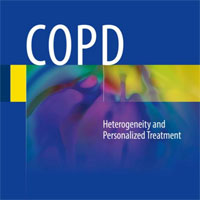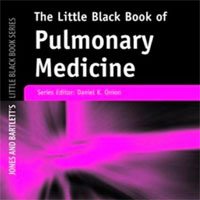Tag: COPD
Lung-protective Ventilation Strategies for Mechanical Ventilation
This study is an important step toward optimizing mechanical ventilation strategies, addressing the interplay between mechanical power, gas exchange and long-term respiratory outcomes could further refine lung-protective... read more
COVID-19 vs non-COVID-19 Patients Without Hematological Malignancies Treated for Invasive Pulmonary Aspergillosis
COVID-19-associated pulmonary aspergillosis (CAPA) patients have less comorbidities and higher fungal burden compared to Putative Invasive Pulmonary Aspergillosis (PIPA), but clinical outcomes are similar between groups.... read more
Eosinopenia as a Predictor of Clinical Outcomes in CAP Patients
Contrary to previously published data, our analysis did not demonstrate an association between eosinopenia and increased mortality risk in hospitalized patients with community-acquired pneumonia (CAP), highlighting the complexity... read more
Nebulized Long-Acting Bronchodilators to Treat ARF in an Older Patients
Although long-acting bronchodilators are not approved to treat acute respiratory failure (ARF), the older adult in this case clinically improved after three doses of revefenacin and arformoterol. Additional studies are... read more
COPD: Heterogeneity and Personalized Treatment
This book explains how analysis of the heterogeneity of chronic obstructive pulmonary disease (COPD) enhances understanding of the condition and leads to improved, personalized treatment. State of the art knowledge is presented... read more

Methylprednisolone vs. Hydrocortisone in Septic Shock Patients
Corticosteroids play an important role in the management of septic shock patients, especially in those with higher doses of vasopressor. However, the therapeutic benefits of corticosteroids are not limited to hydrocortisone... read more
Elevated BCR Risk Factor For CHF in Critically Ill COPD Patients
Chronic obstructive pulmonary disease (COPD) is a leading cause of global morbidity and death. The blood urea nitrogen-to-creatinine ratio (BCR) is recognized as a crucial marker to assess renal function and cardiovascular... read more
Prognostic Value of Composite Inflammatory Markers in COPD Patients
Elevated systemic immune inflammation index (SII), systemic inflammatory response index (SIRI), pan-immune inflammation value (PIV), neutrophil-to-lymphocyte ratio (NLR), and platelet-to-lymphocyte ratio (PLR) are associated... read more
Predictor of Weaning Outcome Using Sonographic Assessment of Post-intubation Laryngeal Obstruction
The study determined that both cuff leak volume and ultrasound-guided LACWD exhibited excellent sensitivity and specificity in predicting clinically significant upper airway blockage post-extubation, with cuff leak volume... read more
Little Black Book of Pulmonary Medicine
This succinct, bulleted handbook is the ultimate resource for pulmonary and respiratory specialists. Throughout the book, tables and figures summarize important clinical data and current professional society recommendations,... read more

Factors Associated with Delayed Extubation in Post Cardiac Surgery Patients
The process of extubation is a crucial phase in postoperative care. By comprehending the elements that impact DE, healthcare providers can effectively allocate medical resources to enhance the success of weaning, extubation,... read more
Two Biomarkers Improve CRB-65 Predictability for Death Due to Community-Acquired Pneumonia
Augmenting CRB-65 (confusion, respiratory rate, blood pressure, and age 65 or older) score with troponin T high-sensitive (TnT-hs) and procalcitonin (PCT) help to predict death or intensive care unit (ICU) admission of patients... read more
Relationship between Concentrations of Oxygen and Levels of Oxidative Stress in Patients Receiving Oxygen Therapy for Severe COVID-19 Pneumonia
We evaluated the potential of high-flow oxygen therapy to increase oxidative stress and inflammation in COVID-19 patients. Our observation of decreased MDA levels when transitioning hypertensive patients from high-flow to... read more
Management of Refractory COPD
Chronic obstructive pulmonary disease (COPD) is a common condition with an estimated global prevalence of almost 12 percent in adults over age 30 years [1-3]. Prior to the onset of the COVID-19 (coronavirus disease 2019)... read more
Spontaneous Breathing Trials Should Be Adapted for Each Patient According To The Critical Illness
Unassisted SBTs, namely PSV0PEEP0 and T-piece trial, are the most appropriate to replicate the postextubation effort to breathe. In this multicentre randomized cross-over study, adult intensive care unit patients under... read more
Invasive Fungal Infections in Non-neutropenic Patients
Critically ill patients, particularly those with features of immunosuppression, are susceptible to invasive fungal infections (IFI), which pose significant diagnostic and therapeutic challenges. Candida and Aspergillus,... read more
Association Between Comorbid COPD and Prognosis of Patients Admitted to ICU for Non-COPD Reasons
Comorbid COPD increased the risk of 28-day mortality among patients admitted to the ICU for non-COPD reasons, especially for those admitted to the cardiac surgery recovery unit. A retrospective cohort study was performed... read more
Optimal Antibiotic Treatment Duration of Upper and Lower Respiratory Tract Infections
The available evidence for non-ICU community-acquired pneumonia (CAP) and chronic obstructive pulmonary disease (AECOPD) supports a short-course treatment duration of 5 days in patients who have clinically improved. Efforts... read more
Comorbid Burden at ICU Admission in COVID-19 vs. Sepsis and ARDS
The burden of age and comorbidity is more prominent in ICU-admission for sepsis and acute respiratory distress syndrome (ARDS) than for COVID-19. This is likely to be caused by a combination of COVID-19 affecting the relatively... read more
COVID-19 ARDS Patients vs. Patients with ARDS
Ventilation management may differ between COVID–19 ARDS (COVID–ARDS) patients and patients with pre–COVID ARDS (CLASSIC–ARDS); it is uncertain whether associations of ventilation management with outcomes for CLASSIC–ARDS... read more
Glucose Metabolism Disorders: Pre-hospital Oxygen Therapy and Saturation Variability in COVID-19 Patients
The COVID-19 pandemic has revealed that viruses can have multiple receptor properties, penetrating various tissues and causing mutations in various genes, thus promoting a range of metabolic disorders. The purpose of... read more
Risk Factors of Post-intubation Hypotension in Severe Pneumonia Patients
Post-intubation hypotension (PIH) was one of the serious complications after Endotracheal intubation (ETI) in Severe pneumonia (SP) patients. The risk factors of PIH were investigated in SP patients to provide a theoretical... read more









